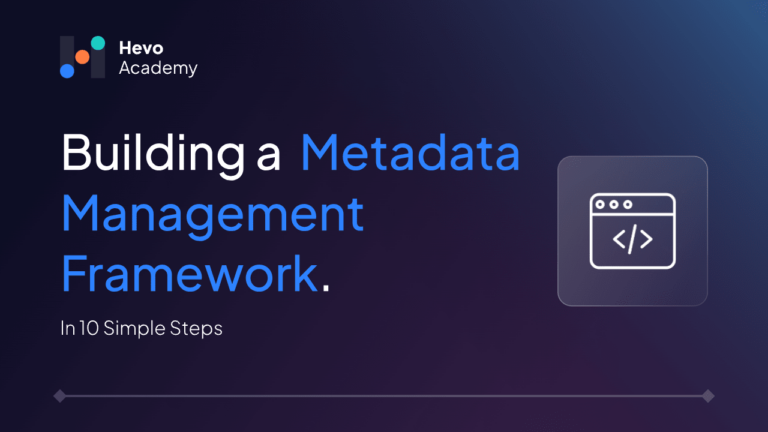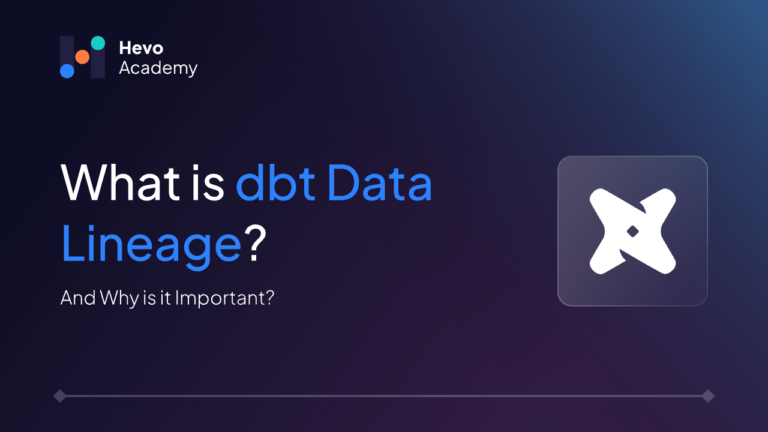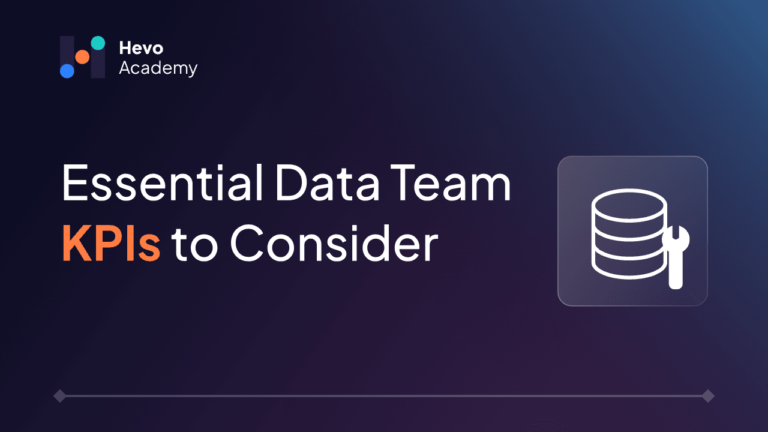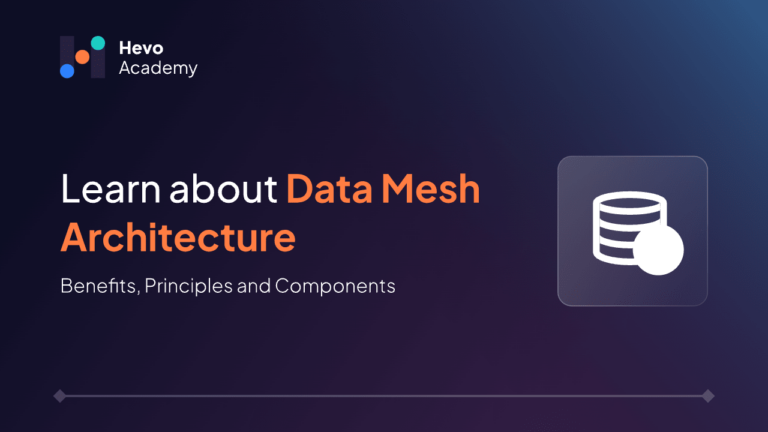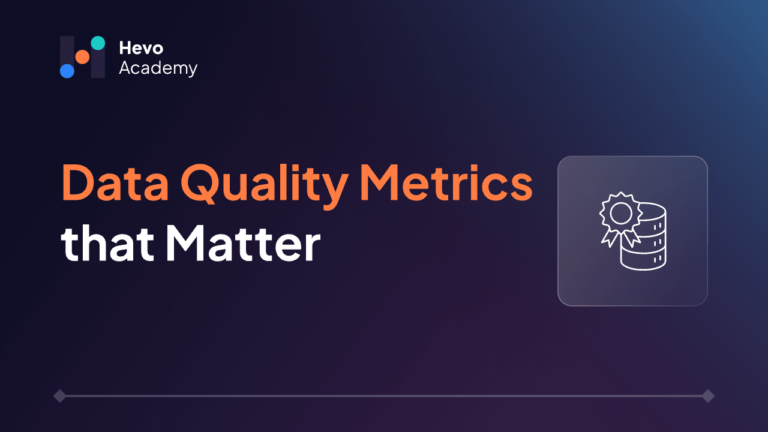“Metadata Management Framework” is a term we have heard often, especially in recent times when everything is about handling and optimizing data; in other words, “Data is King.” In this blog, we will discuss in detail what a metadata management framework is and how to build it.
Table of Contents
What is Metadata Management?
Metadata is more than just “data about data.” Sure, it describes how and where data is stored, but it also describes the concepts that data represent, the relations between them, business processes, application systems, and technology infrastructure. Generally, we can divide metadata into three types:
- Technical Metadata. This metadata describes the entities of your organization (which format the data is stored in and where, what the specs of the servers are, …).
- Business Metadata. It describes the business processes (the data models, the business rules definitions, …).
- Operational Metadata. It describes the details and metrics of all operations (the throughput of your data pipelines, the number of errors in each run, …)
Metadata itself is a type of data. Therefore, it needs management. Metadata management is crucial for organizations for many reasons, such as:
- Increase confidence in data.
- Improve operational efficiency.
- Support regulatory compliance
Do you want to migrate your metadata for better analysis but don’t know how to? Rest assured, Hevo’s no-code platform helps streamline your ETL process. Try Hevo and equip your team to:
- Integrate data from 150+ sources(60+ free sources).
- Utilize drag-and-drop and custom Python script features to transform your data.
- Risk management and security framework for cloud-based systems with SOC2 Compliance.
Try Hevo and discover why 2000+ customers like Ebury have chosen Hevo over tools like Fivetran and Stitch to upgrade to a modern data stack.
Get Started with Hevo for FreeUnderstanding the Metadata Management Framework
A metadata management framework is a set of tools and processes used to collect, organize, store, and publish metadata. It sets standards for metadata and policies on who has access to it. A metadata management framework is essential to maximize metadata’s value and avoid inaccurate reporting.
Key Components and Stages of Metadata Management Framework:
A metadata management framework consists of multiple components. Some of them are tools to be used, and some are processes to be followed. The main components can be described as:
- Metadata Model. A model is needed to describe the relations between systems and entities.
- Metadata Standards. Standards such as naming conventions, custom attributes, and documentation
- Metadata Store. Sometimes called a metadata repository, the metadata store is where the metadata is stored finally.
Metadata management also has multiple stages. We can divide the process into three stages: collecting metadata, organizing metadata, and publishing metadata.
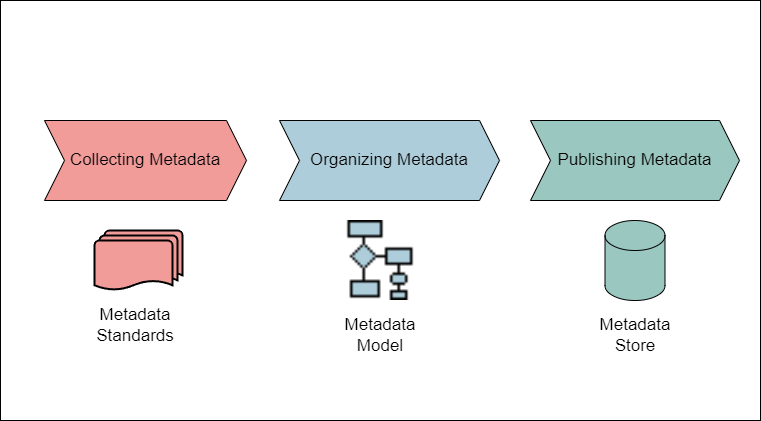
- The first stage is the collecting stage. Most tools store their metadata in metadata repositories, and the collecting metadata stage involves moving metadata from these repositories to the main metadata store. We can use our usual data collectors/agents to collect the metadata. Some tools can be configured to store their metadata directly in the metadata store.
- The next stage is the organization stage. To maximize its value, metadata is stored according to our created metadata model. We can leverage the ETL tools in our stack to transform metadata to fit the metadata model.
- The final stage is the publishing stage, where we publish our metadata for others to use. Access to the metadata store has to be regulated. The least privilege principle should be implemented to ensure that users can access only the metadata they need.
Benefits of Implementing a Metadata Management Framework
As we already mentioned, implementing a metadata management framework could greatly help any organization manage its data assets. Some of the most important benefits of having a metadata management framework are:
- Optimized Search and Findability. You can easily search your assets using their names or properties using your metadata management framework. You can also group assets according to business rules to improve asset discovery.
- Enhanced Data Governance. Your metadata management framework will give you better control over your data. You will be able to see the data sources, who has access to them, and what actions have been taken against them.
- Improved Collaboration and Communication. All teams can view information about other teams’ data, which will also enhance collaboration and communication between them.
- Scalability and Manageability. The framework would enable you to manage a large number of data assets without any issues, enhancing your ability to scale upwards.
- Better User Experience and Trust. As the metadata management framework provides more value, trust in it will increase. This will improve the user experience, as users will be able to find accurate information about different data assets with little effort.
- Integrating a metadata management framework with automated data lineage tools allows for more comprehensive data governance, ensuring traceability and compliance across datasets.
Building a Metadata Management Framework
Now let’s go through the steps needed to build a metadata management framework. We suggest a framework with 10 steps to be tackled sequentially.
- Identify Key Stakeholders
The first step is we need to identify stakeholders that will take part in building the framework. These could be data owners, data stewards, product owners, or lead developers.
- Define Goals and Objectives
We need to engage with the stakeholders to identify their needs and expectations of the framework. Based on these discussions, we must define goals and a time plan to achieve them.
- Understand your Data
The next step is to understand your data deeply. Engage with the stakeholders to identify what kind of data you work with, where it comes from, and who uses it.
- Metadata Management Strategy
Create a strategy for collecting the metadata, storing it where it is needed, and identifying who will have access to it.
- Choose the Right Tool
Choose what tools you need to implement your metadata management strategy, whether they are collectors of metadata or other tools to store and map it. For example, An enterprise data catalog plays a pivotal role in metadata management by centralizing metadata from multiple sources, making it easier for users to access consistent, well-documented data.
- Develop Metadata Standards
Create standards for metadata in your organizations. These standards could cover how to generate metadata, collect it, cleanse it, and access it.
- Implement a Metadata Repository
The repository will store all your metadata. You need to ensure that it stores metadata efficiently and provides quick and easy access.
- Training and Education
This is the most important step. You need to provide the right training to your organization’s employees to help them maximize the value the metadata management framework gives them. Educate them about how managing metadata efficiently can benefit their responsibilities.
- Governance and Stewardship
Metadata is data, after all. Metadata needs governance and continuous maintenance to keep providing the intended benefits. Encourage others in your organization to document and maintain their metadata. Gartner’s data governance emphasizes that effective metadata management, backed by strong data governance practices, is key to maximizing the value and accessibility of your data assets.
- Continuous Improvement
Monitor your metadata management framework closely and add additional metadata sources, standards, processes, and features as your organization scales.
Applying the Metadata Management Framework: A Practical Example
Imagine that you are working for a company that has a ride-sharing mobile app. The management asked you to build a metadata management framework to seek insights from all the metadata circling inside the company and use it to improve daily operations.
- Identify Key Stakeholders
Start by identifying who owns the metadata you will collect. Perhaps they are technical individuals like developers and architects, or they are more business-oriented, like product owners and project managers. Also, look into who uses or might want to use the metadata you will collect.
- Define Goals and Objectives
Define specific goals that the framework you are building should achieve. These might be centralizing metadata in one place, improving its data quality score, or restricting access to only certain roles. Engage with your stakeholders to define these goals together.
- Understand your data
Start analyzing your data assets. Look at what kind of metadata they generate and see if you can generate more insightful metadata and how you can model it.
- Metadata Management Strategy
Plan how you will collect the metadata from all the company’s different teams and services, what kind of processes you will allow on it, and how you will manage access to it.
- Choose the right tool
Analyze the tools available on the market to see which ones best suit your needs in terms of features, budget, maintainability, and learning curve.
- Develop Metadata Standards
Define standards that all metadata generated in your company must follow. These could be standards regarding metadata quality (null values, inaccurate values, …), metadata generation frequency, level of granularity, and more.
- Implement a Metadata Repository
Implement a metadata repository and create data pipelines to load metadata into it. Then, set appropriate viewing and editing permissions for different roles in the repository.
- Training and Education
Create a training plan with your stakeholders. Teach them how to use the framework you created to easily search and access metadata of multiple systems and processes.
- Governance and Stewardship
Assign data stewards of metadata to individuals or teams according to the ownership of its sources. Ask them to contribute to defining the metadata and business entities behind it.
- Continuous Improvement
Set periodic meetings with the stakeholders to monitor the framework and its usage. Assess how people are using the framework and if there are any complaints or issues that need to be resolved. Also, listen for suggestions on improving the framework and adding new features or metadata sources.
Key Considerations and Best Practices
There are some considerations and best practices that can save you a lot of time and effort when you first build your metadata management framework:
- Keep your stakeholders engaged in every step of your framework, even if their participation is not needed. They can inform you of new decisions and changes affecting your work.
- Define KPIs for your data management framework to observe better and detect any issues.
- If people in your organization are not using the framework, they are not convinced of its value. You need to highlight the benefits of applying the framework and, in some cases, rethink them if they are not attractive to your colleagues.
- Avoid making your framework too technical and hard to use. The business team and the product team are among the top teams that would greatly benefit from and contribute to your framework.
Read about metadata management vs master data management and understand how each plays a vital role in effective data management.
Conclusion
A metadata management framework can help extract insights from an organization’s metadata, especially when scaling its size and operations. Implementing a metadata management framework also provides easier searching and better collaboration between teams, making it worth investing in.
Schedule a personalized demo with Hevo for seamless data integration.
FAQ on MetaData Management Framework
What is a metadata management framework?
A metadata management framework is a set of tools and processes for collecting, organizing, storing, and publishing metadata. It sets standards for metadata and controls who has access to it.
What are the types of metadata?
There are three main types of metadata: technical metadata (e.g., which format the data is stored in and where, and what the specs of the servers are), business metadata (e.g., the data models and the business rules definitions), and operational metadata (e.g., the throughput of your data pipelines, and the number of errors in each run).
What are some possible standards that I can add to my metadata management framework?
Formats of generated metadata (CSV, unstructured, …)
Frequency of generating metadata (every hour, every 12 hours, once a day, …)
Level of granularity (metrics for each server vs metrics for each cluster, table-level statistics vs schema-level statistics, …)

